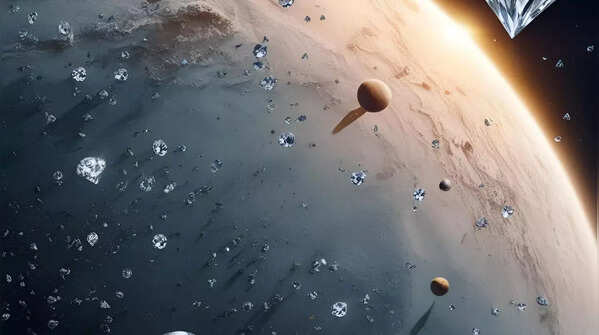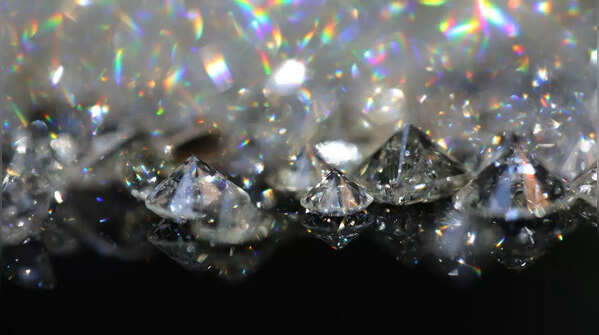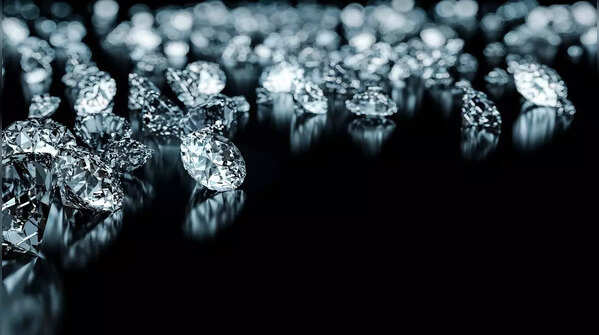Is diamond rain real on icy planets? Scientists might have proof

Is diamond rain real on icy planets? Scientists might have proof
Imagine standing beneath a sky where diamonds, not raindrops, fall silently through dense clouds. It may sound like science fiction, but for distant planets it could be a reality.
Scientists believe that deep within the atmospheres of these ice giants are gases that are different from those present in the atmosphere of the Earth. So these gases behave differently on those planets. But is this true or just an imaginary story out of fiction?

How does diamond rain occur
Deep within the atmospheres of Neptune and Uranus, conditions become incredibly intense. Pressures rise extremely high to millions of times that of Earth's atmosphere, and temperatures reach thousands of degrees Celsius. Only extreme conditions like these can cause the Methane molecules to break down and release carbon atoms. These freed carbon atoms bond together and crystallize into solid diamond structures. These newly formed diamonds are denser than the surrounding gases and thus fall down, and then sink deeper into the planet's interior.

Is diamond rain real on the icy planets
Neptune and Uranus, often called "ice giants," are composed primarily of hydrogen, helium, water, ammonia, and methane. Methane, in particular, plays an important role in the formation of diamond rain. Under extreme pressures and temperatures deep within these planets, methane molecules break apart, releasing carbon atoms that crystallize into diamonds. These diamonds then fall down as rain, falling toward the planet's core, creating what scientists describe as "diamond rain."

Diamond rain has laboratory evidence
Directly observing the interiors of Neptune and Uranus is currently beyond our technological reach. So the scientists have adopted indirect methods to study and verify the diamond rain theory.
They have performed lab experiments that have successfully recreated the extreme conditions found deep within ice giants. Researchers have used powerful lasers or shockwaves to generate intense pressures and temperatures, simulating the environment inside these planets.

Scientists have recreated the intense conditions found on these planets
Under the extreme heat and pressure, the carbon atoms in the material were forced together, forming tiny diamonds, or nano-diamonds. This doesn’t prove diamond rain is happening out there, but it shows it’s totally possible. These experiments give scientists strong evidence that the wild idea of diamonds falling from the skies on icy planets might actually be real.

How does diamond rain impact these planets
Diamond rain isn’t just a wild space fact, it can also help to explain phenomena about Neptune and Uranus. As these diamonds fall deep into the planets, they release energy, which might help keep the insides of these worlds warm. Apart from that, as the diamonds sink in, they might pull other materials with them that could also disturb the planets’ strange magnetic fields. By understanding how diamond rain works, scientists get clues about what’s going on deep inside these distant, mysterious planets.








